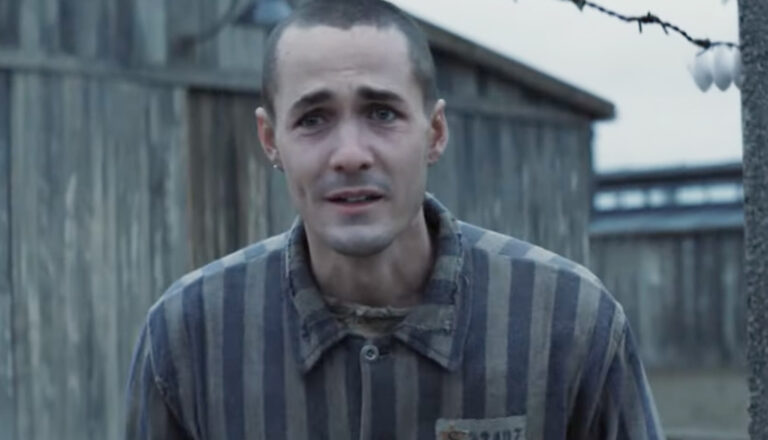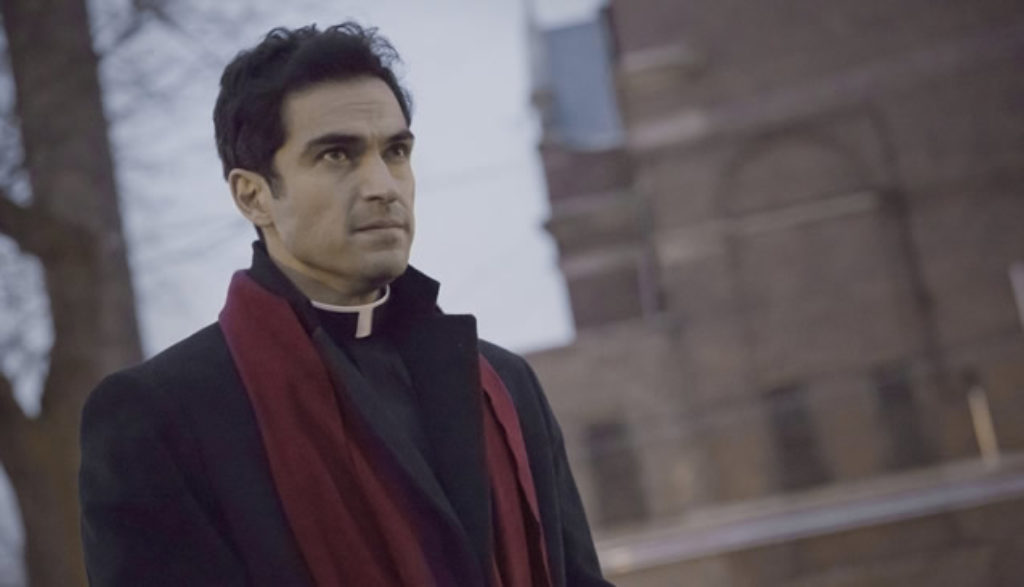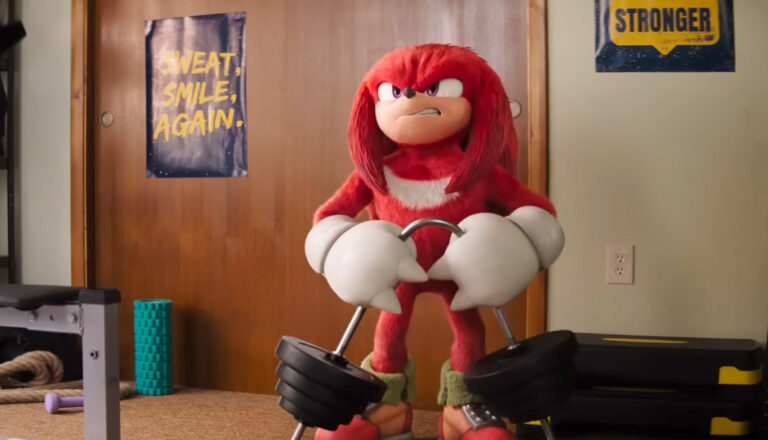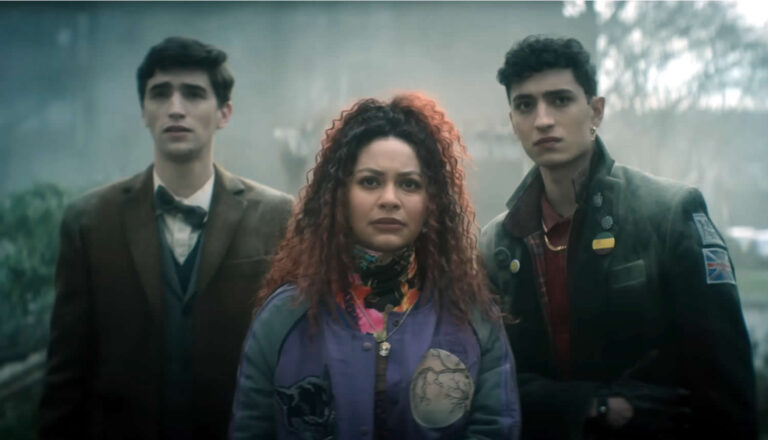
The Tattooist of Auschwitz
The Tattooist of Auschwitz is a little like its titular character. It’s painful. It gets under your skin. And it just might leave a mark.

Demon possession can be a difficult thing to identify, especially in teens. Are they sullen? Angry? Do they like to sit alone in dark rooms? That could be just normal adolescence, right? Or it could be something else entirely—especially if the teen suddenly starts spitting profanities in Latin.
Angela is pretty sure one of her teen daughters is possessed. Father Tomas—a young, logical priest from the local parish—isn’t as certain. Or, at least, he isn’t until he sees one of the girls psychically killing rats in the attic. After that, he’s pretty convinced that he’s not just dealing with a typical case of late-adolescent angst.
But Thomas is an exorcism novice, a guy who didn’t even believe in demons until he stared one down in Angela’s attic. Knowing he’s in over his head, Tomas calls in Father Marcus, a priest who’s seen his share of demons and (we hope) expelled most of them.
But Marcus wonders if there’s more going on behind the curtain.
“God, for your future reference, isn’t the one who works in mysterious ways,” he tells Tomas. “You’re being manipulated, my friend, by forces you can’t even begin to understand.”
Fox’s new series The Exorcist is a reimagining of sorts of William Peter Blatty’s 1971 novel and 1973 movie of the same name. Indeed, much of the television series feels familiar.
Angela and her daughters are well-to-do. Her prosperity and 21st-century cynicism leaves her ill-prepared to deal with the dark forces that have invaded her house. A young priest plagued with his own troubles gets paired with a grizzled veteran—a man who’s seen more than his fair share of evil and done his best to expel it.
But the characters are different: Unlike the single mother in the original Exorcist, Angela is married to a mentally impaired husband named Henry. Regan, the original 12-year-old victim, has been replaced by older teens Casey and Kat—one a bubbly high-schooler, the other a moody cynic apparently home from college.
And the relational dynamics are more complicated, too. Father Marcus has been in retreat since his last attempted exorcism, a supernatural fight that claimed the life of a young boy. Father Tomas apparently has secrets that we can only assume the devil would very much like to twist to his own ends. Henry seems to be slowly fading into dementia, leaving Angela to deal with the crisis on her own. And Casey, a moody college student, has long had a prickly relationship with her mom.
“I liked my friend’s stupid Wiccan craft store on Facebook, so now she thinks that I’m out drinking ram’s blood or something,” she tells Tomas. “Do you know how embarrassing that is?”
And let’s not forget the mysterious characters who haunt the narrative’s edges: the strange homeless man who shouts silently. The sagely spoken oldster, eyes covered in dark glasses, who offers enigmatic advice. The show is determined to throw its viewers, like Father Tomas himself, off-kilter—to make us wonder who or what he can trust.
In an age in which religion is rarely mentioned on television, The Exorcist is an explicitly spiritual—and an explicitly Christian—exercise. It suggests that God is real and the devil is, too, and that the only hope to defeat the latter is trust in the former. The show’s tagline, “Every soul is a battlefield,” is a truism that most religious leaders would say is spot-on.
But many of those same religious leaders would likely have plenty to say—and to scorn—when it comes to The Exorcist’s horrific content.
Exorcisms aren’t clean, easy affairs. Some demons are very resistant to leave their hosts—killing them if need be. The evil forces within torture their victims through all manner of gross afflictions and contortions. And frankly, to more cynical eyes, the priests’ treatment of these tormented souls doesn’t always seem that much better. Possessed people are sometimes tied and chained to beds or chairs, with even fellow priests prone to tell exorcists to back off.
As for sexuality, it’s suggested that Father Tomas has struggled to keep his vows of celibacy. Hints have been dropped regarding Casey’s sexual identity as well. Characters drink and swear. Even though the premise of the show supports the idea of God, moments within it can demean both Him and religion in general. Demons twist Scripture to taunt and destroy.
The original Exorcist was intended, according to author Blatty, as a “sermon that no one could possibly sleep through.” And like its predecessors, this TV series may encourage healthy spiritual curiosity among some. But does that justify all the unhealthy content Fox feeds us in this problematic reboot?
A mother believes that one of her two daughters may be possessed and turns to Father Tomas—a rising star in the Catholic Church—for help. Tomas, despite his own failings and doubts, in turn seeks advice from an experienced exorcist.
There’s a great deal of talk about the will of God. Tomas, despite his success in the Catholic church, never felt particularly “called” to do the job until now. “Sometimes God gives you a job to do,” he says during a homily. “And when that happens, you have to drop everything, and you have to just start walking.” But the experienced exorcist, Father Marcus, also wonders whether Tomas is being manipulated by darker forces. And after talking with him, Marcus seems to be angry with God that he came. “All this time and this is what you send me?” he shouts. “This is your d–n sign?!”
Tomas initially tells Angela that the Church made up demons as a way to explain mental illness. “Demons are metaphors,” he says. “Don’t you think I know that?” Angela says. “I am telling you, something is going on!” We hear a reference to Wicca and snide references to God. We also hear Scripture and prayer, and see possessed people. Someone hears mysterious sounds in the walls. A man seems to channel information, unaware that he’s doing it. We see religious pictures and iconography.
A bird crashes through a window; trapped in the jagged glass, its lifeblood drips ominously on a Bible below. A possessed boy bleeds from his mouth, spits out a tooth and snaps his own neck in the midst of an exorcism, twisting his head all the way around. A rat is supernaturally killed. We see pictures of people involved in exorcism who’ve died, apparently burnt to death. There’s a reference to a girl being strung up by a bedsheet.
Tomas is exchanging letters with a woman, and his sister believes he might be having an affair. (Tomas assures her that he’s not.) Angela says that Casey’s mood changed when a “friend” of hers died in a car crash: The way she says “friend” suggests that the relationship went beyond friendship. Characters drink wine and say “d–n” three times, “a–” twice and misuse God’s name twice. Jesus’s name is also abused.


Paul Asay has been part of the Plugged In staff since 2007, watching and reviewing roughly 15 quintillion movies and television shows. He’s written for a number of other publications, too, including Time, The Washington Post and Christianity Today. The author of several books, Paul loves to find spirituality in unexpected places, including popular entertainment, and he loves all things superhero. His vices include James Bond films, Mountain Dew and terrible B-grade movies. He’s married, has two children and a neurotic dog, runs marathons on occasion and hopes to someday own his own tuxedo. Feel free to follow him on Twitter @AsayPaul.

The Tattooist of Auschwitz is a little like its titular character. It’s painful. It gets under your skin. And it just might leave a mark.

The Sonic spinoff blends explosive adventure and road-trip-buddy-comedy into a fun romp for both kids and diehard fans.

Dead Boy Detectives targets teens in style and story. But it comes with very adult, problematic content.